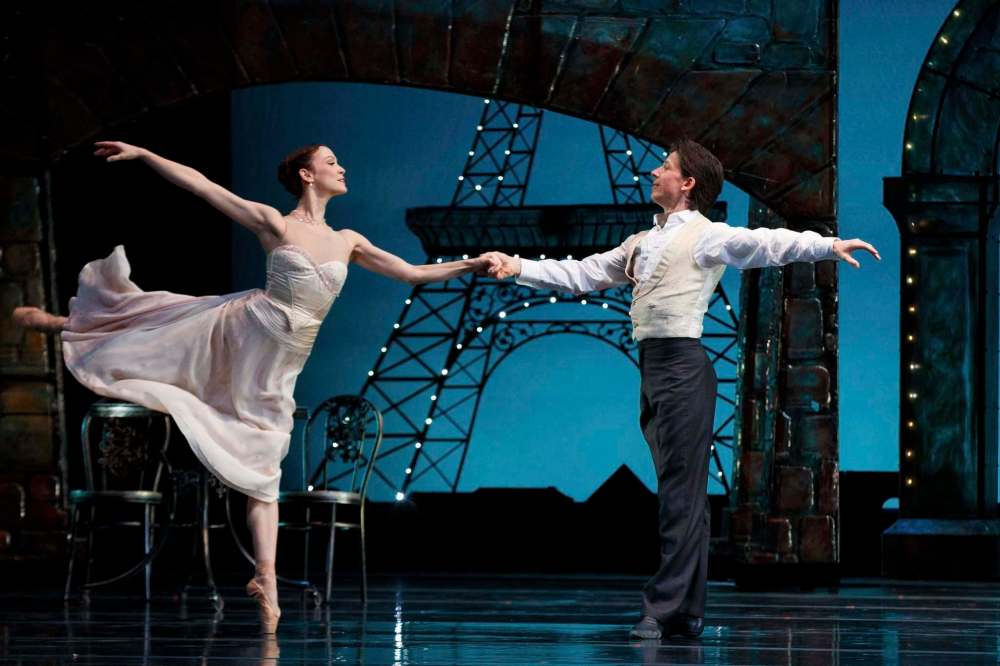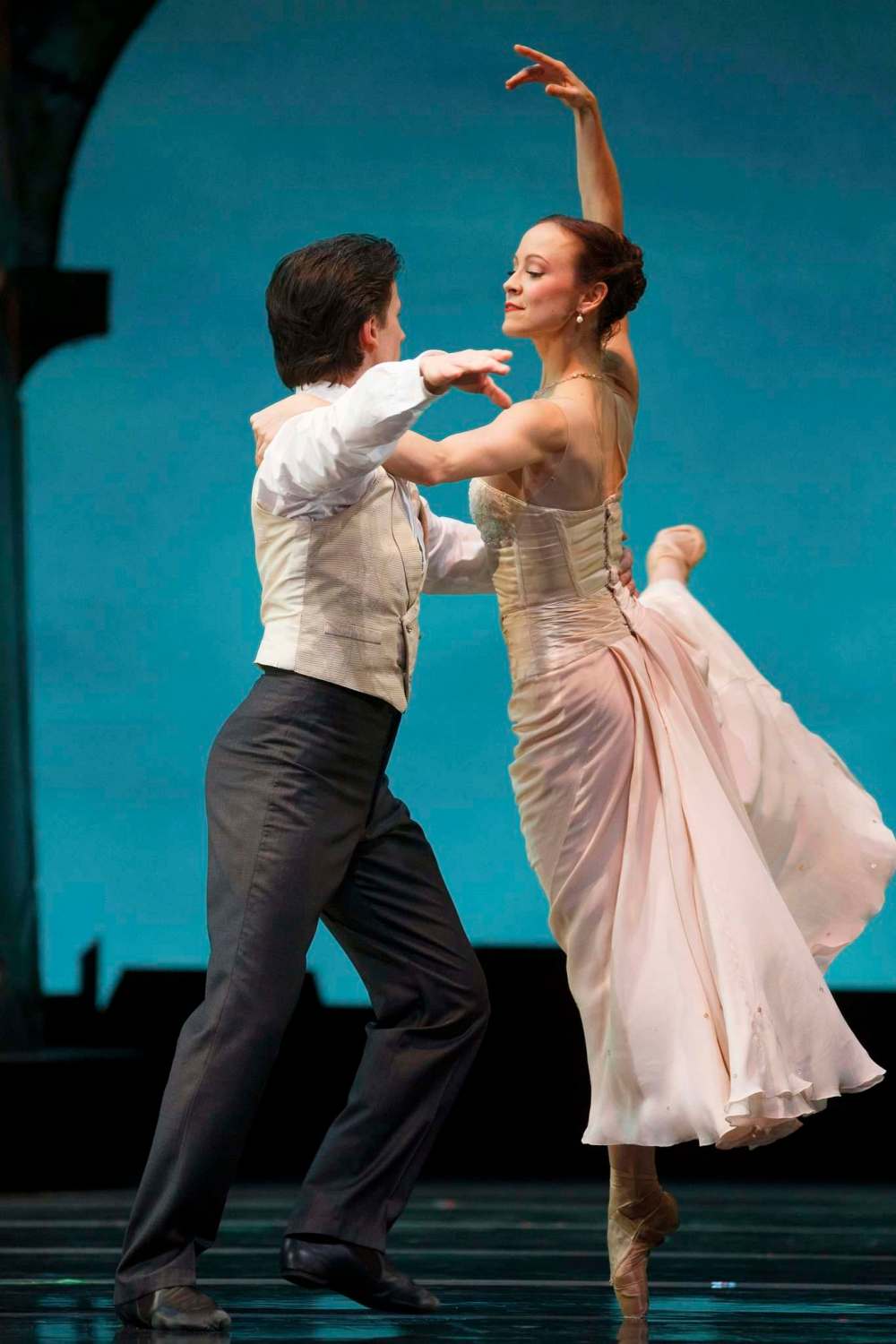Tango and flash
RWB's colourful crowd-pleaser a dazzling show of Parisian passion
Advertisement
Read this article for free:
or
Already have an account? Log in here »
To continue reading, please subscribe:
Monthly Digital Subscription
$19 $0 for the first 4 weeks*
- Enjoy unlimited reading on winnipegfreepress.com
- Read the E-Edition, our digital replica newspaper
- Access News Break, our award-winning app
- Play interactive puzzles
*No charge for 4 weeks then billed as $19 every four weeks (new subscribers and qualified returning subscribers only). Cancel anytime.
Read unlimited articles for free today:
or
Already have an account? Log in here »
Hey there, time traveller!
This article was published 26/02/2020 (1520 days ago), so information in it may no longer be current.
In the 10 years since its world première in 2009, the Royal Winnipeg Ballet’s bonbon confection Moulin Rouge — The Ballet has been sweeping viewers off their feet. It’s also been the company’s biggest box office smash in its 80-year history, and offers plenty of spectacular eye candy with its latest ooh-la-la production, which opened Wednesday night.
Last staged here in May 2013, Moulin Rouge, choreographed by Jorden Morris and set in fin de siècle Paris, tells the tale of lovers Nathalie and Matthew, who seek their destiny at the world-famous cabaret.
The RWB is looking particularly youthful these days, especially its corps de ballet members, who infuse the 132-minute production (including intermission) with vim and vigour — a handy thing when telling a tale of blossoming love. It’s also worth noting that the lion’s share of leads (with alternating casts) are reprising roles they have performed during the show’s prior two productions in 2009 and 2013, allowing for richer, more in-depth characterization that results in greater emotional layering.

One of those is principal dancer Dmitri Dovgoselets, who will hang up his ballet slippers for good this spring after serving as the company’s backbone for 22 years. His portrayal of Matthew, his final full-length lead role, reveals the character as a dreamy artiste.
Dovgosolets fills the stage with every entrance, his chiselled features and rugged good looks creating a convincing lover, while his natural athleticism sees him bounding across the stage like a gazelle, visually embodying his soaring love for Nathalie, played by first soloist Elizabeth Lamont.
Their ethereal pas de deux, set to Debussy’s luminous Clair de Lune, remains one of the show’s highlights, one filled with touching tenderness further fuelled by windswept spins and lifts against designer Andrew Beck’s inspired sets — which include a glittering Eiffel Tower in the distance — gorgeously lit by Pierre Lavoie.
The always radiant Lamont, who has more sparkle than an entire City of Lights, once again proves her chameleonic acting ability as Nathalie, morphing before our eyes from light-hearted ingénue to passionate woman in love. She displays pristine technique, easily tossing off the dazzling series of fouettés that earns her lead role at the cabaret (not to mention pirouetting into Matthew’s heart).
Seemingly born to play the villainous Ziglar, second soloist Stephan Azulay sneers and leers his way through the ballet as the Moulin Rouge’s power-crazed owner and starmaker, lording power over the “launderettes” and can-can girls (even more chilling now reflected through a #MeToo lens). Azulay, in velvety evening suits by costume designers Anne Armit and Shannon Lovelace, doesn’t just enter the stage, he explodes onto it with gravity-defying split jumps seemingly suspended in air, his larger-than-life portrayal oozing with cocky swagger and bullying bravado.
Morris wisely embeds three historical figures in the ballet, who add their own colourful personalities to the mix. What a joy to see principal dancer Sophia Lee reprise her role of wildly garish, red-wigged cabaret dancer La Goulue, who first appears in the dimly lit, smoky rehearsal hall and challenges Nathalie to a can-can competition performed as blood sport (she loses). The charismatic dancer’s crisp precision and high-voltage energy bring magnetic appeal to her delicious character.
Soloist Yayoi Ban also reprises her role as Mome Fromage, one of the Moulin Rouge’s legendary “Diamond Dogs.” She brings haughty verve to her role, trading high kicks with Lee and wielding pirouettes to stake out her turf at the cabaret.
Finally, soloist Yosuke Mino returns as fabled painter Henri de Toulouse-Lautrec, who is also Matthew’s sidekick, getting him suited up to enter the Moulin Rouge. The audience-pleasing scene, complete with hyperkinetic tailors, resonates with the comic energy of the Keystone Cops.
The mostly classical ballet choreography, augmented by wonderfully stylized tangos and can-can dances cleverly performed en pointe, is mostly effective; however, there is still an abundance of mime and fussy stage business that slows the action.

Several scenes — such as an overly extended painting duel between Matthew and Toulouse-Lautrec — do little to advance the narrative and feel as flat as day-old champagne. The first half of the show could also be whittled down, and there’s an awful lot of skirt fluttering during the can-can scene that becomes too much of a good thing.
However, Morris’s own assembled pastiche score is truly masterful, flowing as a seamless, organic whole while conjuring the romantic ethos of the era. RWB principal conductor Julian Pellicano leads the Winnipeg Symphony Orchestra with finesse, including flavourful accordion sections that inject Parisian charm into the score.
One of the production’s most extended scenes also is one of its most heartbreaking. After seemingly losing his love to Ziglar, Matthew ingests absinthe that leads him to hallucinate in phantasmagoria, set to the melancholy Adagio assai from Ravel’s Piano Concerto in G. His pas de quatre with three female “Green Fairies” — as he returns again and again to his bottle — becomes increasingly harrowing. It’s a testament to Dovgoselets’ expressive acting skills that this scene resonates so powerfully as a cautionary tale about addiction rooted in deep loss.
The ballet ends in tragedy, and Lamont’s final solo, filled with as much pathos as a dying Giselle, elicited audible gasps from the clearly moved crowd.
Holly.harris@shaw.ca


